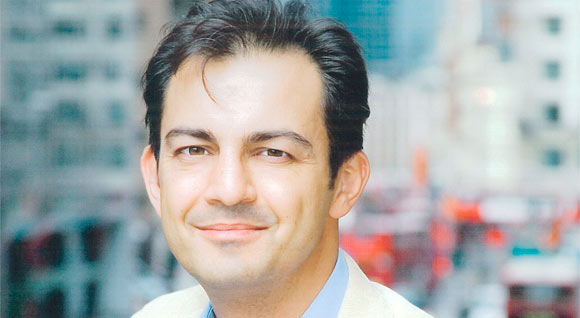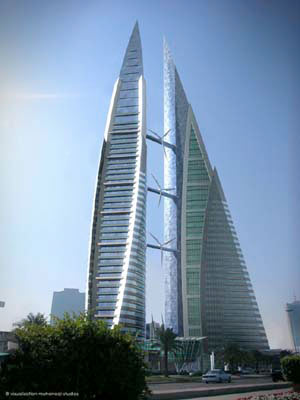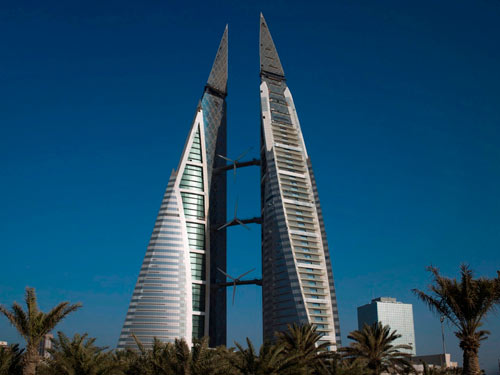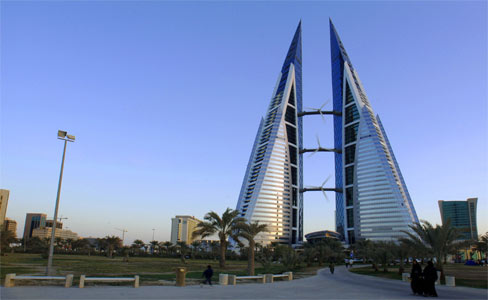ROBECO’s Investment Strategy and Analysis of Global Economic Trends
Douglas Hansen Luke, CEO of Robeco Middle East
When we look at investing for this year our tactical asset allocation team recommends credits, both investment grade and high yield.
Interview with Douglas Hansen Luke, CEO of Robeco Middle East

How do you assess the state of the Global and regional economy and what is your view of the situation in the world – what should a smart investor do?
When we look at investing for this year our tactical asset allocation team recommends credits, both investment grade and high yield.
Currently we believe that for the rest of 2011 the equity markets have done as well as they can. There is increased volatility and uncertainty in the world and right now ROBECO doesn’t believe that the equity risk premium is sufficient to warrant further investment.
When we look at investing for this year our tactical asset allocation team recommends credits, both investment grade and high yield. We have been positive at the beginning of the year on equities and cyclicals and they did do relatively well, but now it’s time to take the gains and move into more secure forms of investment.
If we look at the GCC region what is your analysis for the moment?
This is a difficult question to answer because there are so many uncertainties at present. We need to look at the political situation, the resource situation with higher oil prices and also the wider economy before we can assess this. The consensus growth forecast for the MENA region is around 4-6% and this is still substantially higher than what you will see in Europe, America, or Japan but it is considerably lower than India or China.
We are not a top emerging market but, driven by higher oil prices over the last two years, we will show overall GDP growth.
There is also a liquidity boost from the QE1 and QE2 (the printing of money in America), which affects this region because our currency is linked to the dollar. So far, this has not led to the type of bubble previously seen in Dubai. Instead the region has been more cautious, there are still a lot of people restructuring their debt and this liquidity rush may help to clean up their balance sheets.
The Arab Spring is a great source of uncertainty for the region. What we can say is that the stimulus programmes around it have caused the fiscal break-even price of oil to rise from $70 to $90 on average. The Saudi Government, for example, is putting in a fiscal stimulus of around 10% of the country’s GDP to redistribute the accumulated oil wealth. At the moment 30% of their government spending goes to military expenditures. As defence spending and social stimulus spending has gone up so much, perhaps in the future there won’t be such a great surplus coming out of this region.
You are based in Bahrain at the moment and plan to move to the UAE. Can you tell us about Bahrain?
The Bahraini population has great potential and there are some other elements that make it an attractive location to be based in. Also, Bahrain due to its small size allows for fast communications. To continue to move forward, however, it needs to boost the rule of law and with that the end of the national emergency will be a positive event. 
Bahrain also needs to work hard on the healing process between communities. We as a company have been here eleven years and I don’t think that there are many people who can recall a more extreme period of division. If these things can happen, Bahrain can again be a successful and business friendly destination.
Given all the temptation with new bubbles forming what should the smart investor do?
At ROBECO when we look at long-term investments we look from the top down. We identify mega-trends – the main changes that are too big to ignore, observable trends that continue beyond the business cycle – and position ourselves to try to benefit from those.
After this analysis we try to place ourselves within the business cycle as different asset classes do particularly well at different stages of the cycle. And then finally after that, within the favoured asset classes, we try to find the most valued securities.
Looking at the mega-trends that will affect the world over the long term, they start off with demographic changes driven by rising populations, greater income and the fact that most of these things are concentrated on emerging markets. This then leads to another mega-trend which is scarcity of natural resources because larger, richer populations will demand more resources and contribute more to climate change.
Increasing wealth is a demographic factor – for example with agriculture; people are eating more meat which is more resource intensive than vegetables. If we look at areas that can contribute to alleviating scarcity then we should invest in them.
Finally, we look at sustainability as another core trend. This is driven by governments addressing climate change and consumers who have changing preferences. Consumers are usually willing to pay a little bit more for something that is better for the environment or equitable in a way that gives them a feeling of well being beyond the immediate joy of consumption. 
If we analyze these mega-trends all together then we say we should look particularly at scarcity and inflation and we recommend that people invest in real assets and things that will benefit in the type of economic environment I just talked about.
Can you give us an example of the investments?
Gold is a store of valued but not a productive asset and we see the rise in some commodities particularly gold as being liquidity driven (money has been printed and therefore people want to hedge that against it) but this isn’t the same scarcity as we are referring to. Rather we believe in investing in real and productive assets.
Food, for instance, is an essential pillar that we are looking to invest in at ROBECO. We have been asked by governments and institutions in the Middle East to create and advice on a private equity fund to invest in food in all those countries in the middle. At the moment a lot of people invest in agriculture in North and South America and Australia but there are huge opportunities to invest in agriculture from Africa, through Turkey to as far as Kazakhstan, Malaysia, and Indonesia.
There are huge opportunities where you have some countries that have enormous productive capacity for agriculture and then areas like the Gulf where there is very little produce but there is a surplus of capital.
At the moment a lot of people invest in agriculture in North and South America and Australia but there are huge opportunities to invest in agriculture from Africa, through Turkey to as far as Kazakhstan, Malaysia, and Indonesia.
We want to try to bring balance to the region and put some of our capital to work in countries that could be more productive and also to invest in transportation, logistics and storage to allow those countries with comparative advantage to produce and to take them to markets such as the Gulf that are less fertile.
Which stage are you at with this?
Rabobank believes that to meet the growing demand for food (which will increase 70-100% by 2050) then 30 billion dollars a year needs to be invested in agriculture.
If you look at the Islamic bloc as the world’s fourth largest economic grouping – representing 15% of the world’s population and $3 trillion in assets – then they surely require investment. Indeed the region is an extreme case as population and income growth will be amongst the highest in the world.
From a demand perspective we see the investment potential in these countries as being particularly high because the relative acceleration in their growth rates.
If you look at the supply side inefficiencies then there are also opportunities. In Holland for every hector you can produce eight tons of wheat per year but in Kazakhstan its one ton so there is an 8:1 ratio. So for knowledge transfer as a catalyst for growth there is an immense potential.
Finally, within the region there are governments that can provide capital and they are looking for groups who can actually invest profitably. Right now we are working with a tried and tested private equity team who are based in the region and who have already deployed 700 million dollars and we will be advising them on the private equity and agricultural aspects of that. We will expect this to be launched in the third quarter of this year.
How do you see ROBECO regionally and its expansion?
In this region ROBECO works with some of the largest institutions. Over the last two years we have moved to cover North Africa, Sub-Saharan markets and the central Asian republics. We feel ROBECO will work best for institutions with similar types of needs so we are looking for economies and institutions that are resource based.
How do you distinguish yourself from your competitors here?
Proximity, strong relationships, and a deep commitment to knowledge sharing and thought leadership are the keys to our success.
We distinguish ourselves though our clients by only showing them our best capabilities. To work with sovereign funds in the region you have to be the best. Out of 19,000 asset managers in the world we are the 49th largest so we only present on those capabilities which are clearly ahead of others.
We try to have close relationships with our clients and funds, which is largely why we are in the region. Further, we believe that our ambitious knowledge sharing program throughout the year is appealing. We show case this at the ROBECO Middle East Investor Conference, where we invite the top institutions and we bring the leading thinkers for a closed door open discussion. This year we had Nassim Taleb, Martin Wolf, and Martin Feldstein. Our clients appreciate this dialog in particular.
Proximity, strong relationships, and a deep commitment to knowledge sharing and thought leadership are the keys to our success.
When will you have this conference next year?
It may be in Istanbul or Abu Dhabi next Spring.
What are the future drivers of growth and what markets have potential?
Again looking at the mega trends we are still looking at demographics and emerging markets though this isn’t to be taken as an absolute prescription. You should consider valuation and think of it from a broad perspective. For example, I often say to people don’t necessarily invest in China but invest where China is spending its money. As such we see the large growth in consumer goods being driven by the rise of the middle class in emerging markets.
Resource scarcity for agriculture is also very important and there are significant opportunities in basic materials and fuel/energy. Other elements of sustainability like climate change or looking at the fact that people are living longer with healthy living are important too.
On the debt side with so much debt being issued in the world you should be careful where you see a growth area and we see a lot more demand now for duration hedging. Here our investors invest with us for our skill in picking different fixed income securities but we can also hedge out the risk of interest rates moves for them so as to generate an absolute return.
What are your greatest challenges?
ROBECO as a group faces challenges when executing investments in to mega-trends. With inflation, and food- it is relatively easy to spot these trends (the whole point of a mega-trend is that it’s observable) but the difficulty is incorporating this into existing methods of asset allocation.
why should invest more in a country that is increasing its debt and riskiness – it doesn’t necessarily make sense.
At the moment most institutions base their investments on market cap weightings. The oddest thing there is if you look at fixed income, then the more a country issues debt then the more you should invest in it if you are to follow the market cap benchmark. Intuitively people would think why should invest more in a country that is increasing its debt and riskiness – it doesn’t necessarily make sense.
If you look at equities then market-cap benchmarking encourages people to buy high and sell low. The bigger a company’s weighting, the more people will buy, the higher its shareprice and the greater its weighting. Such a system is clearly pro-cyclical, and the fact that the industry knows this, isn’t sensible.
The challenge lies in not just identifying obvious weaknesses like this but in coming up with an alternative asset allocation framework – a system that can address these weaknesses and incorporate mega-trends. But to actually do this in practice and to cope with the pace of institutional change is difficult. Institutional time frames pose a particular challenge because Institutions have their own timetables with a certain amount of meetings and then there are only so many things that can be addressed. We are working with clients to move towards a more real world based method of investing and allocating assets but this isn’t something either we or our clients can do in one go.